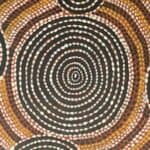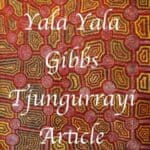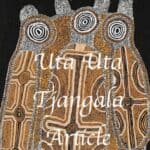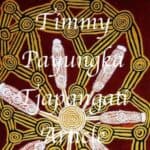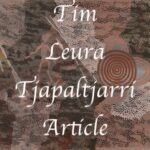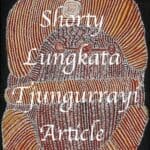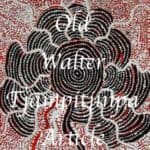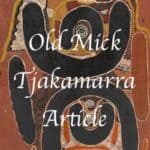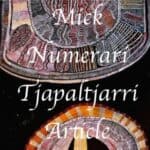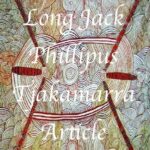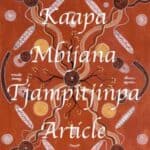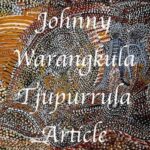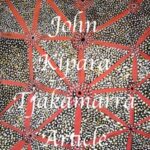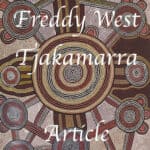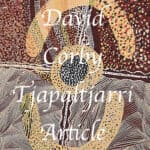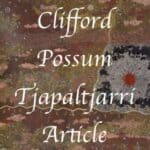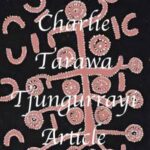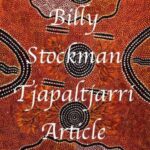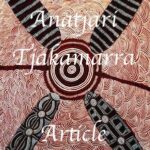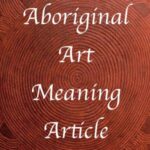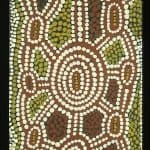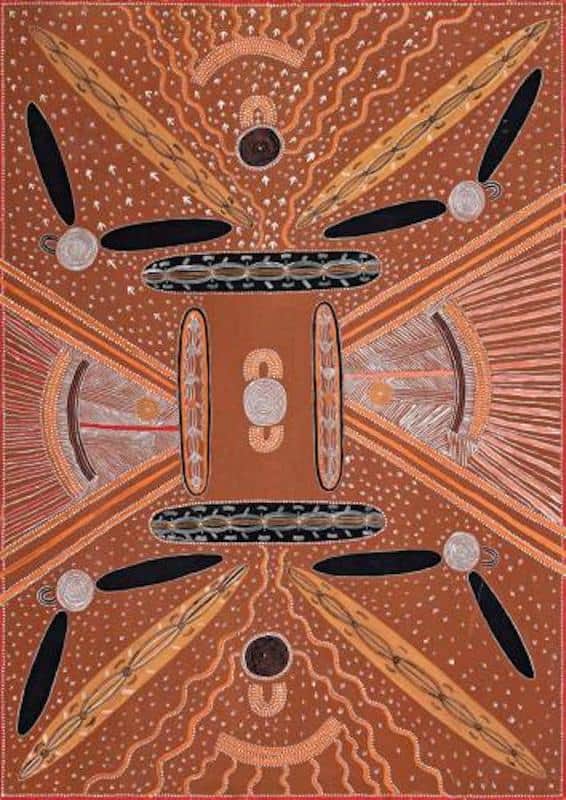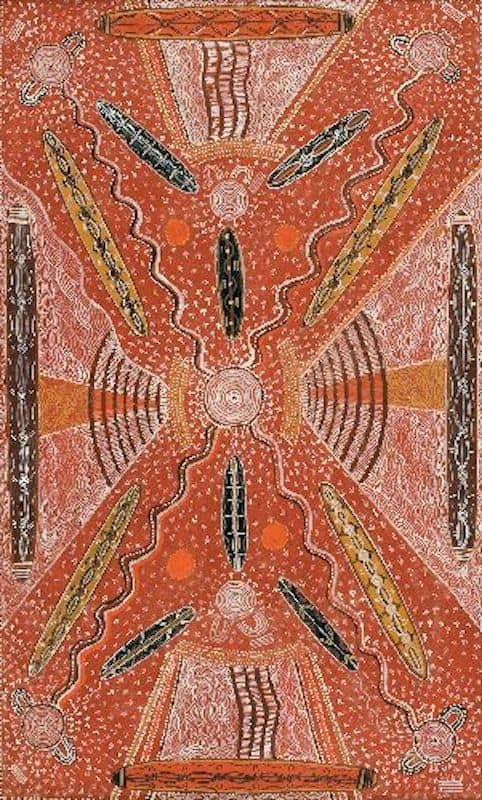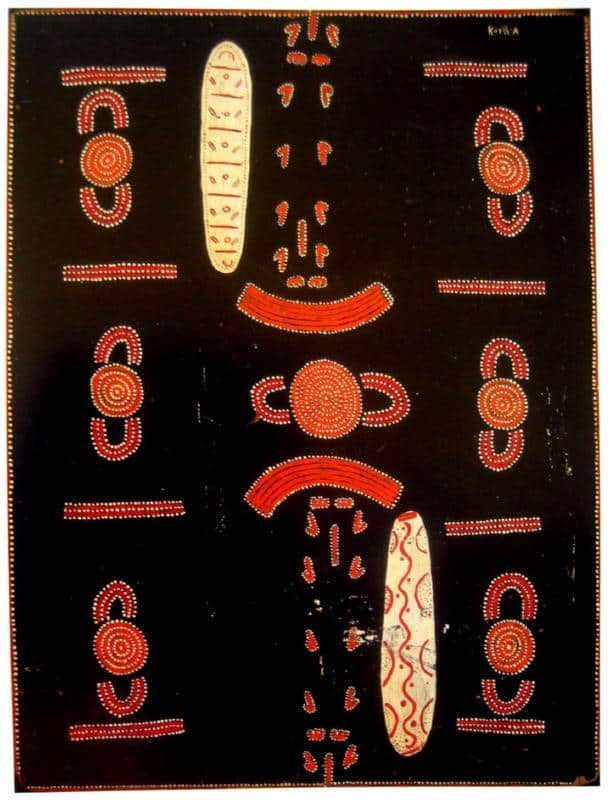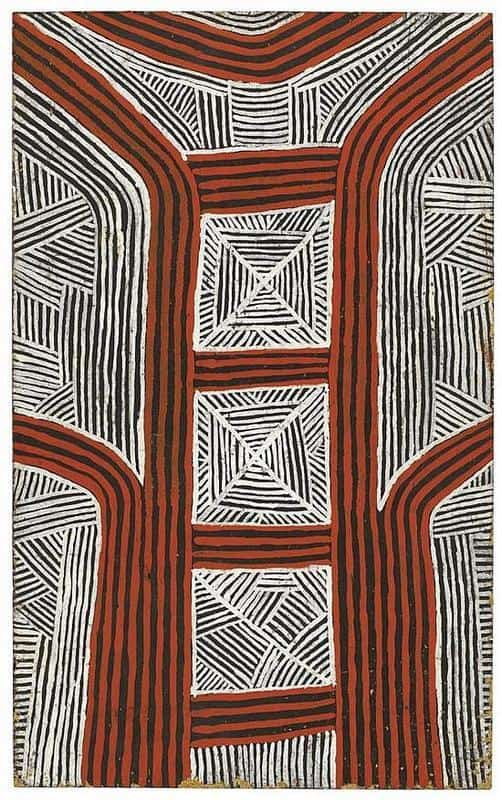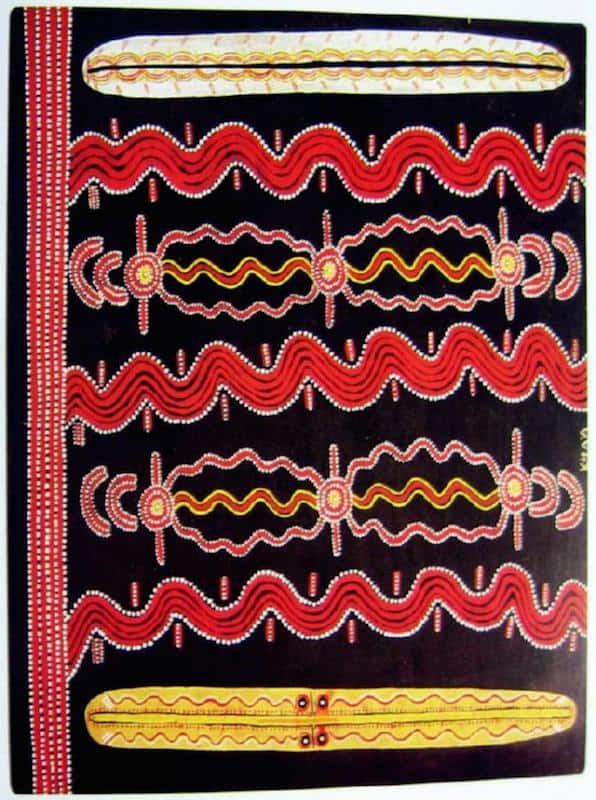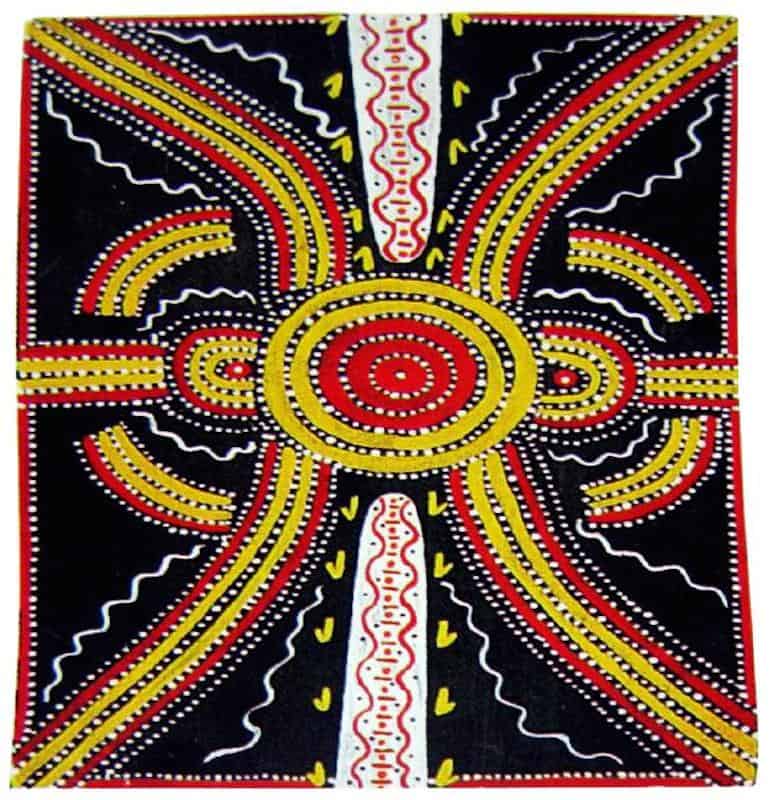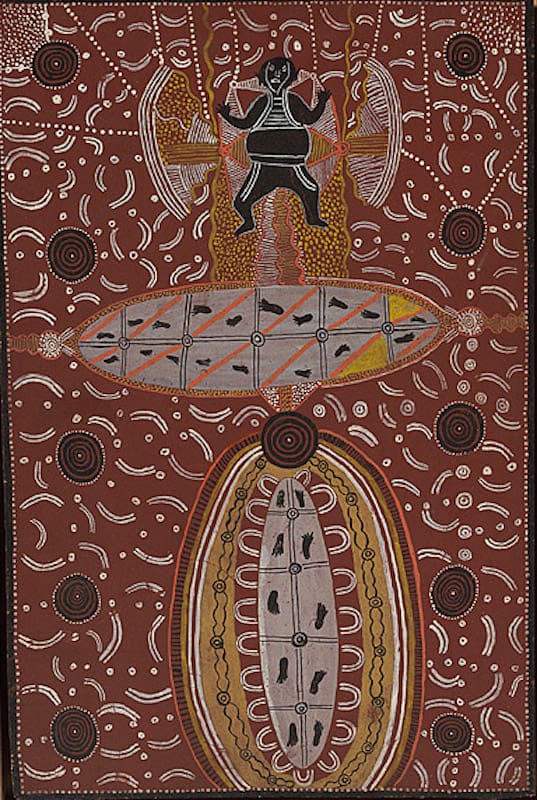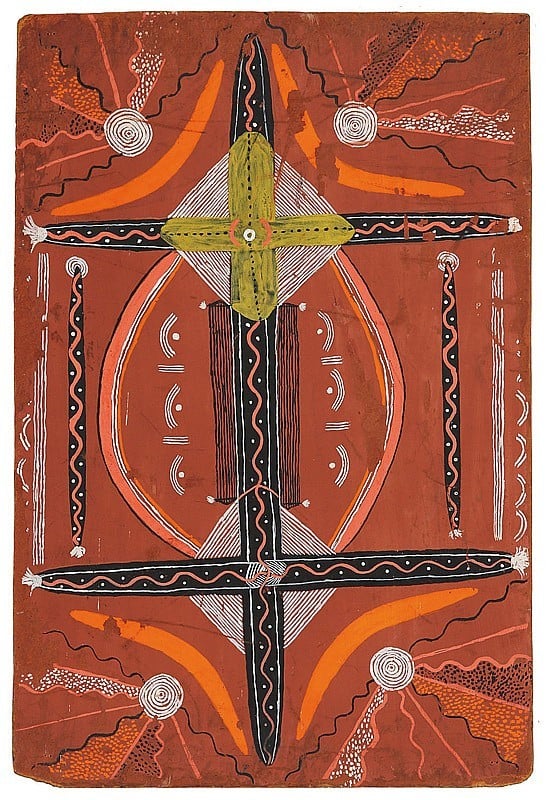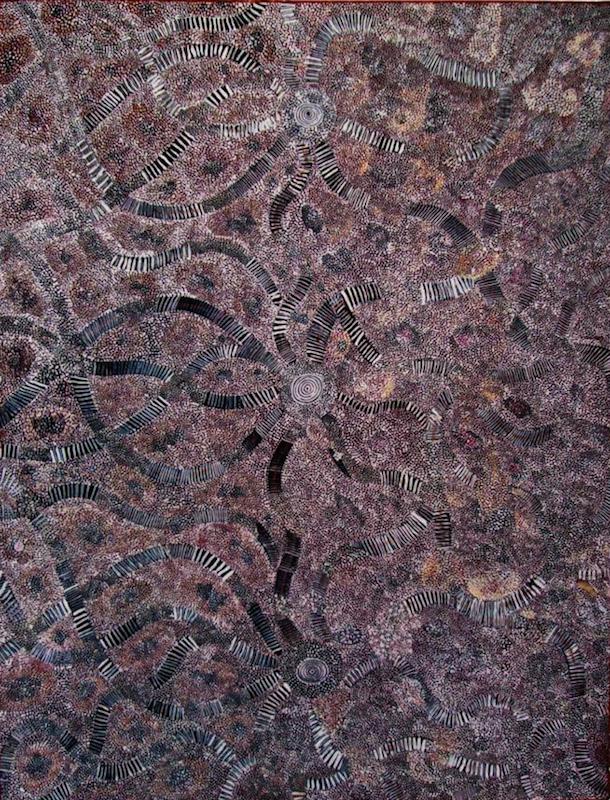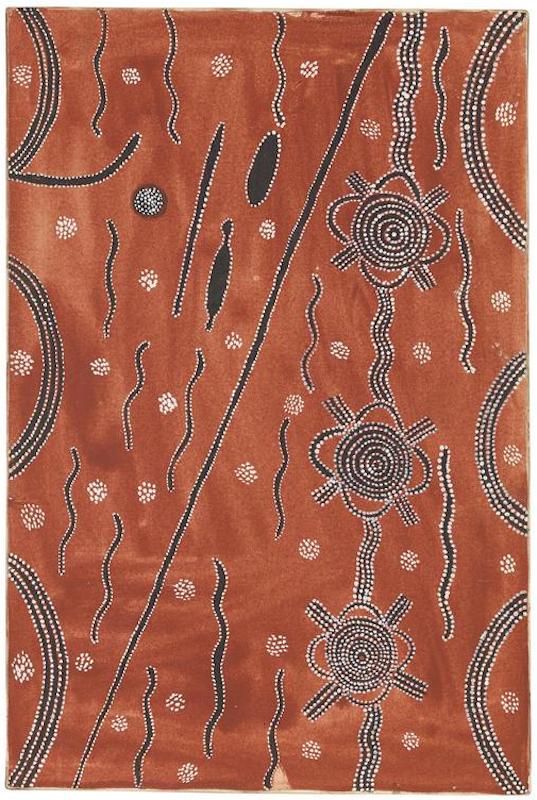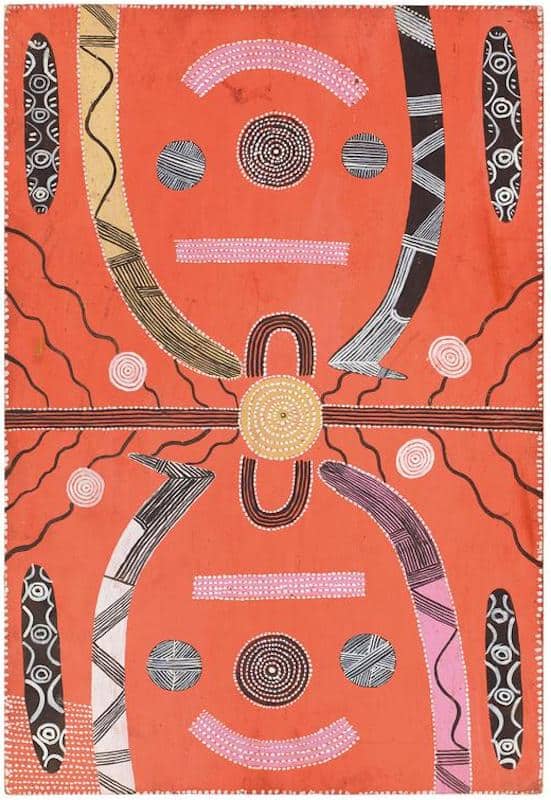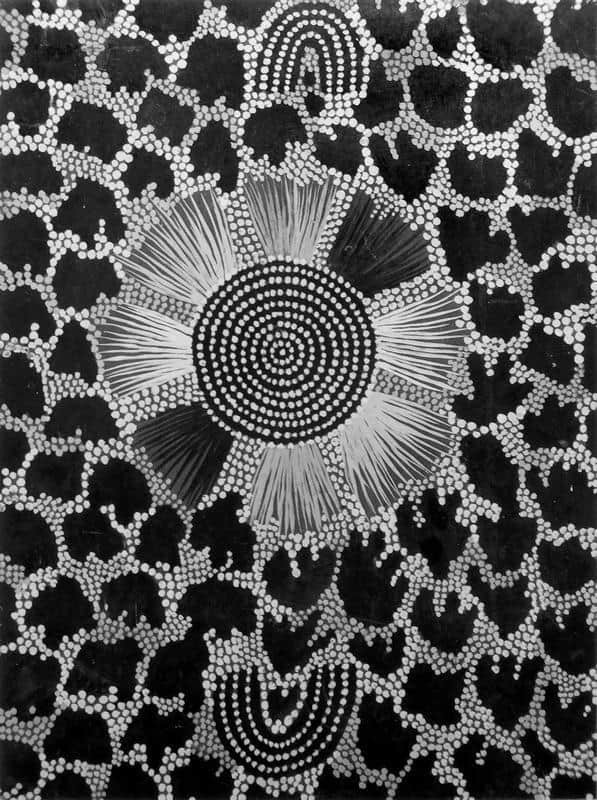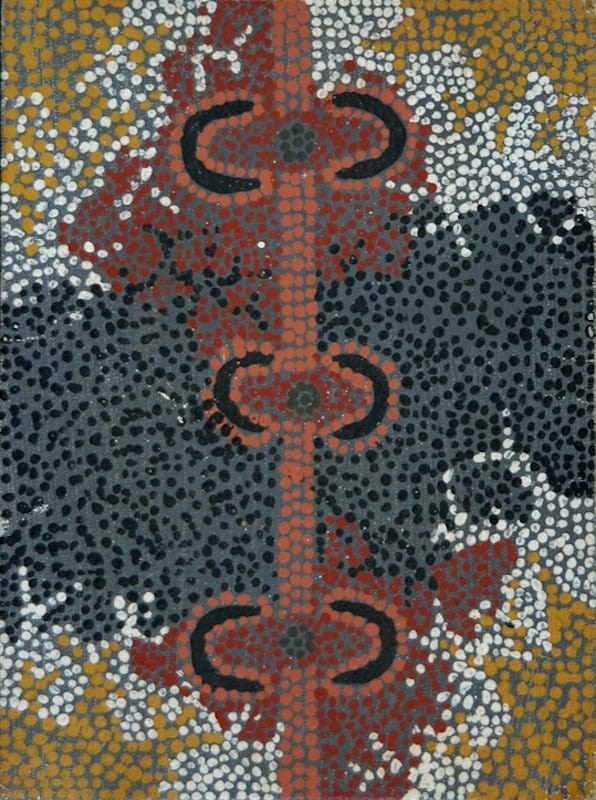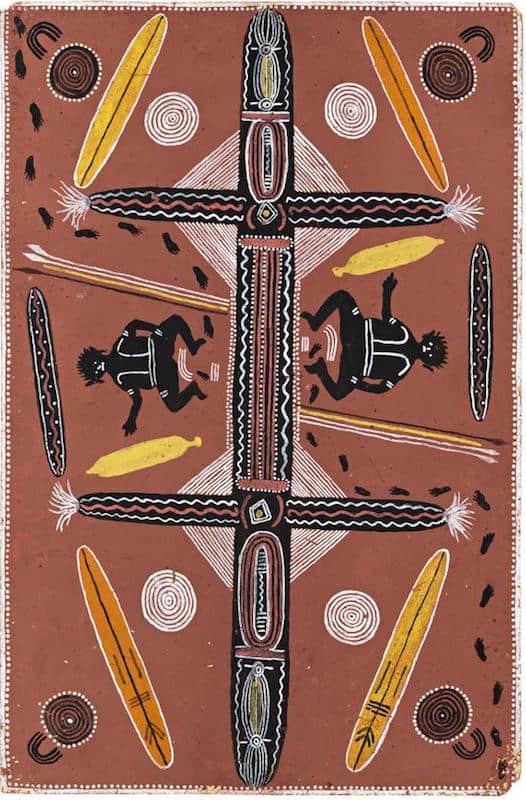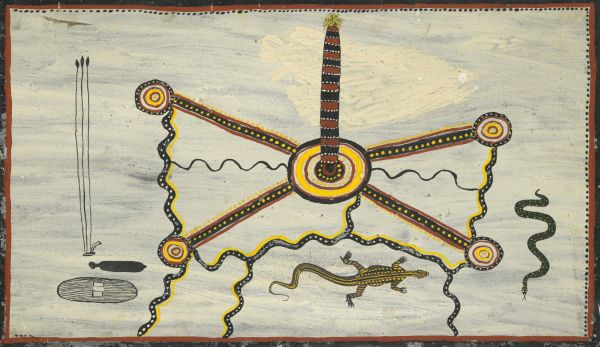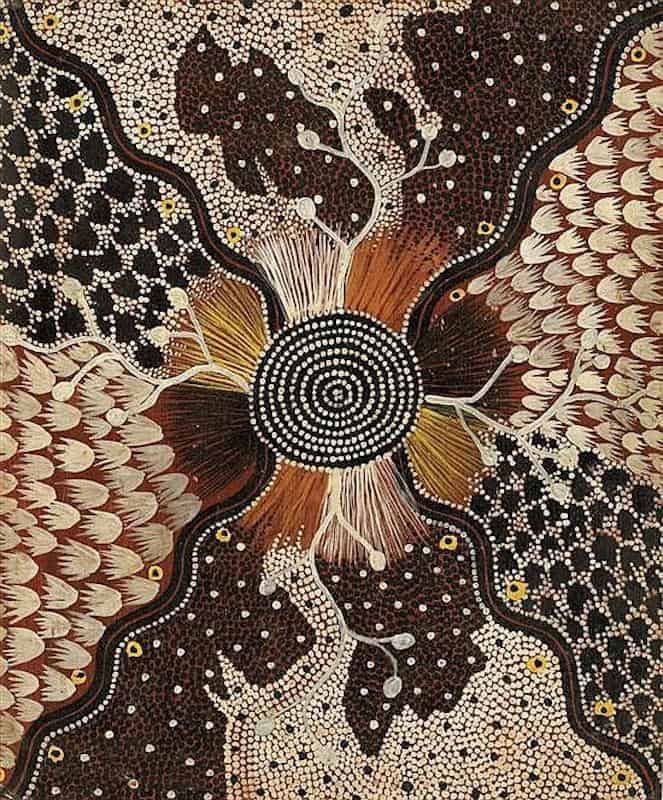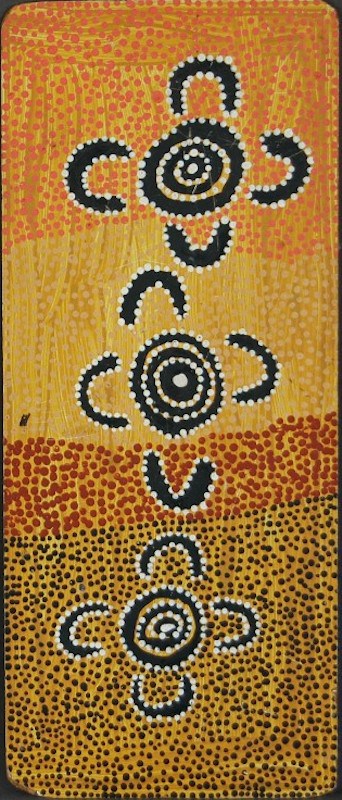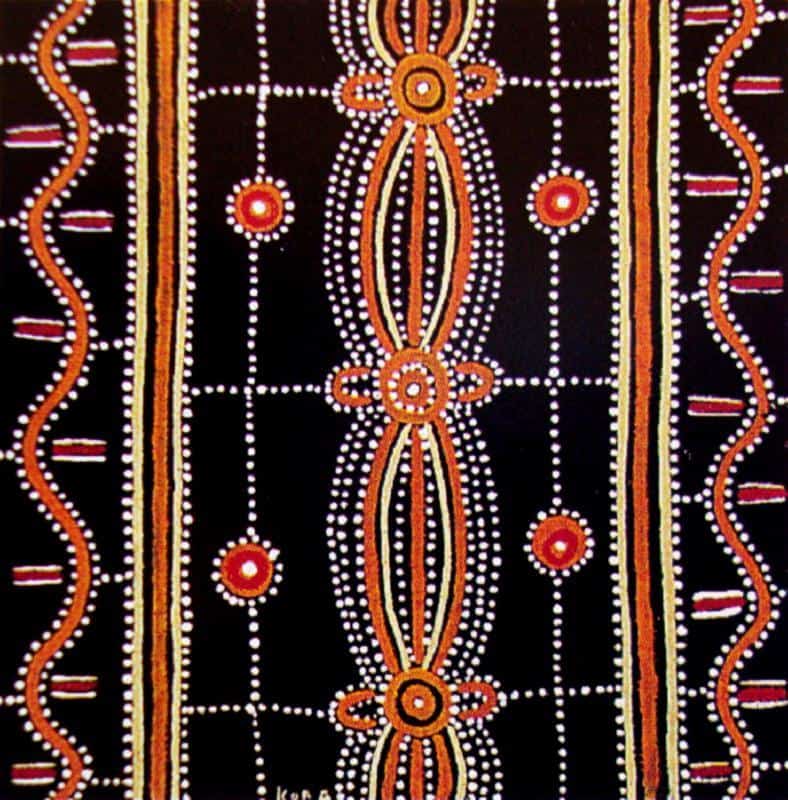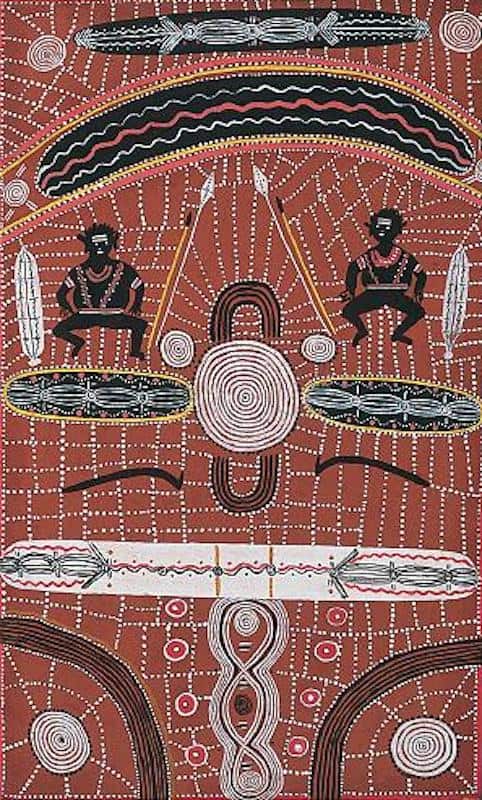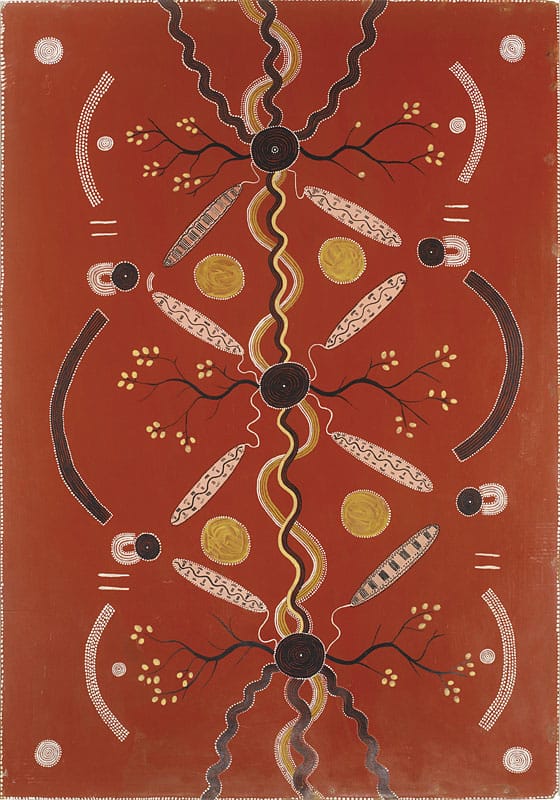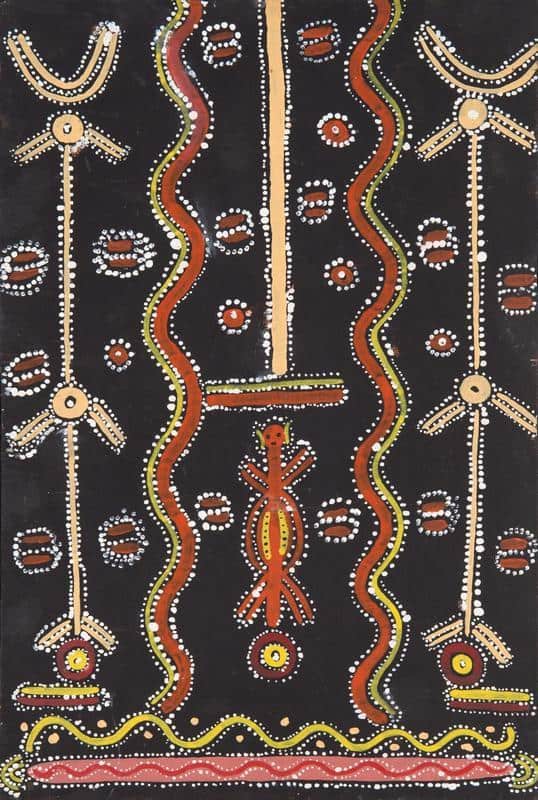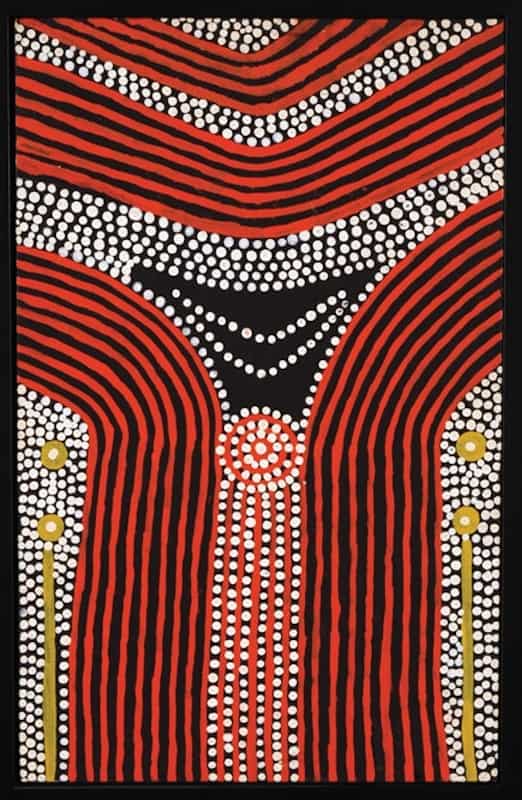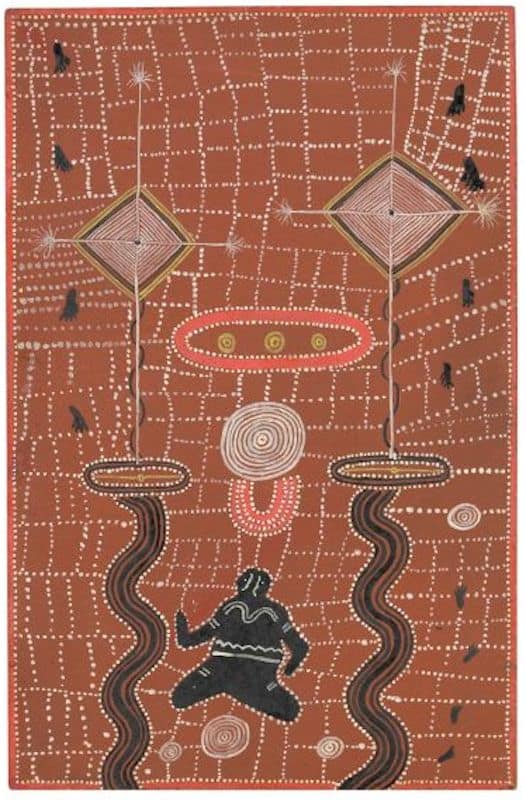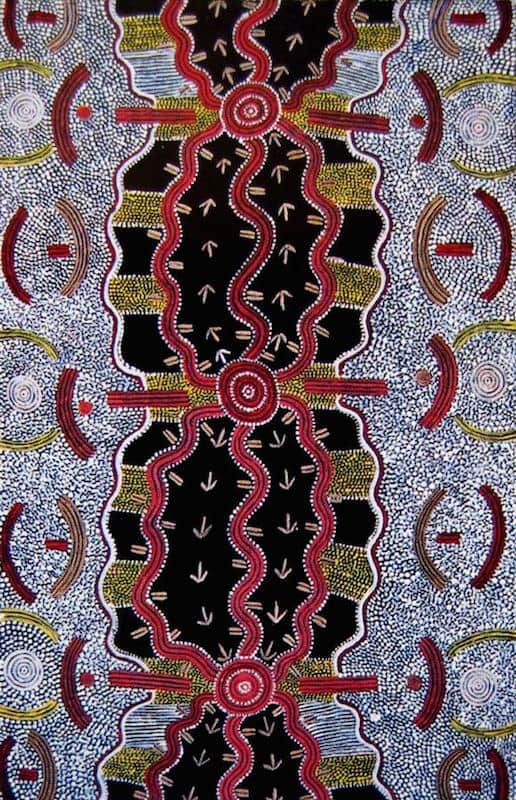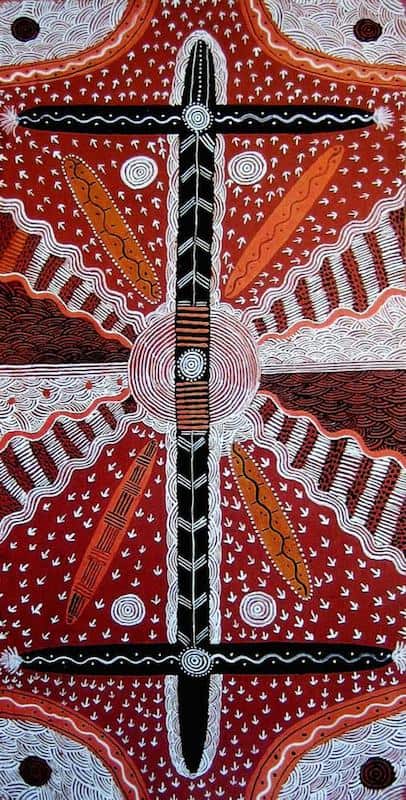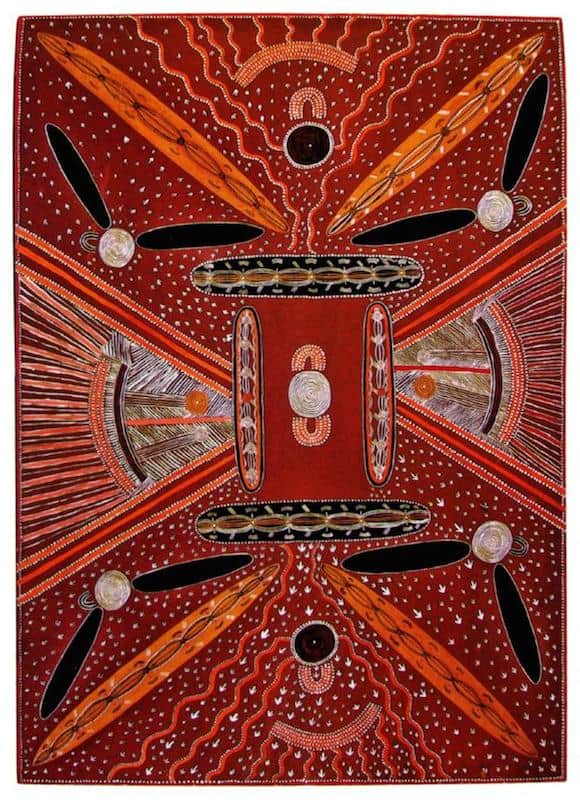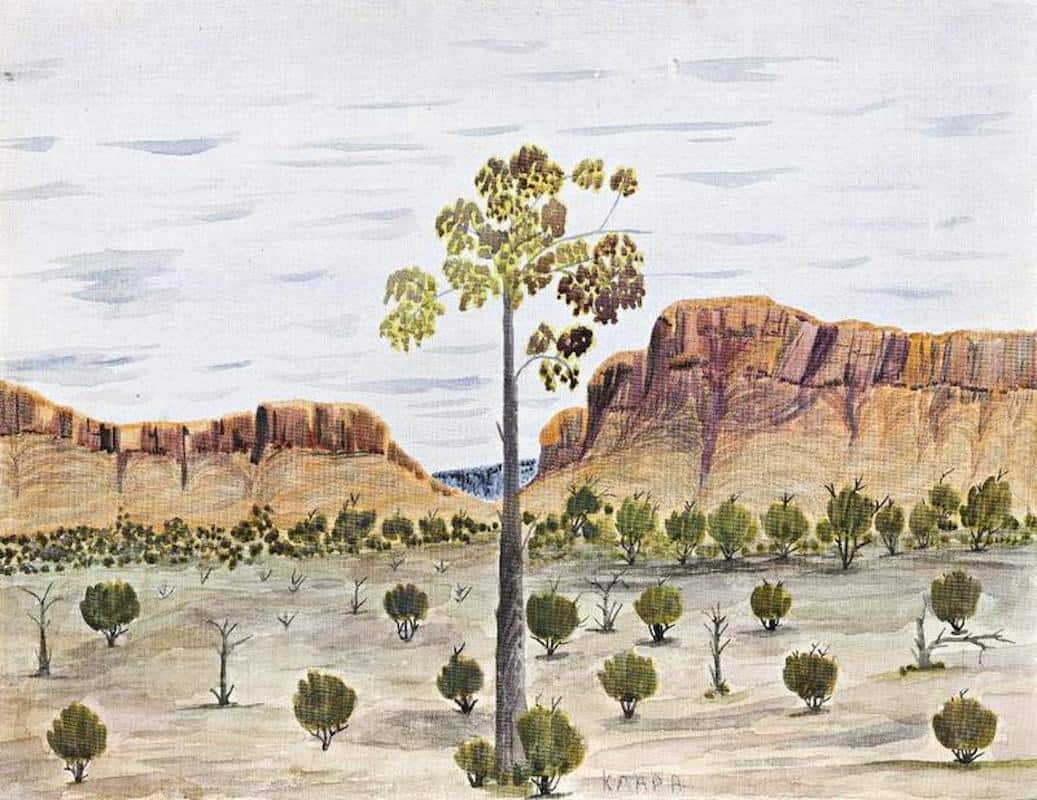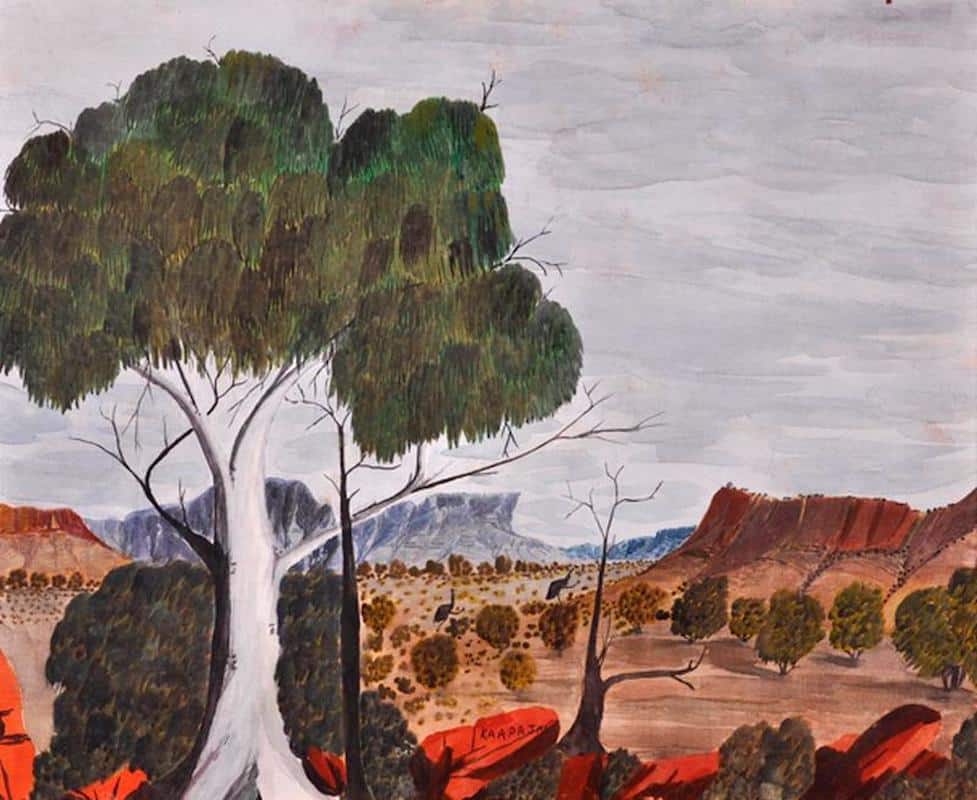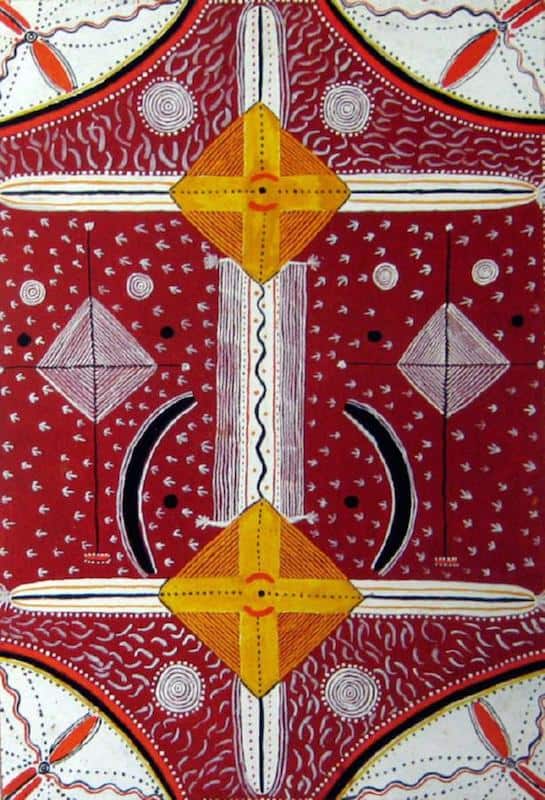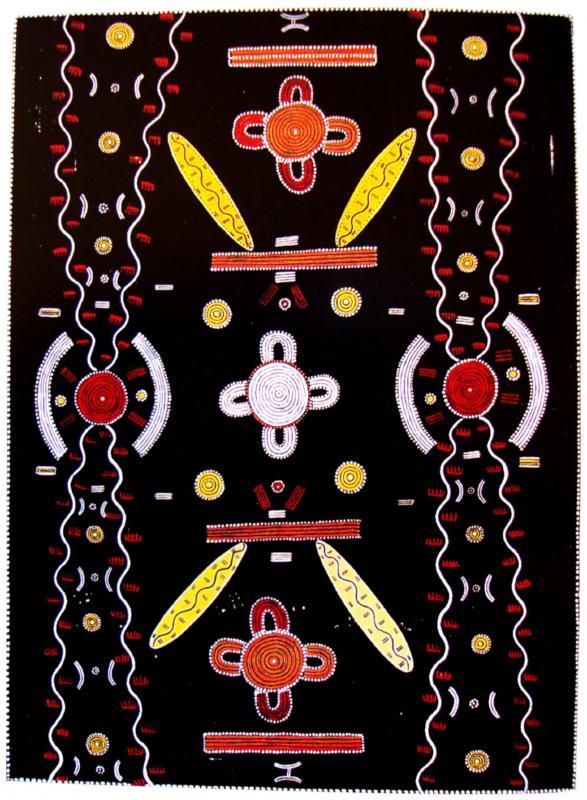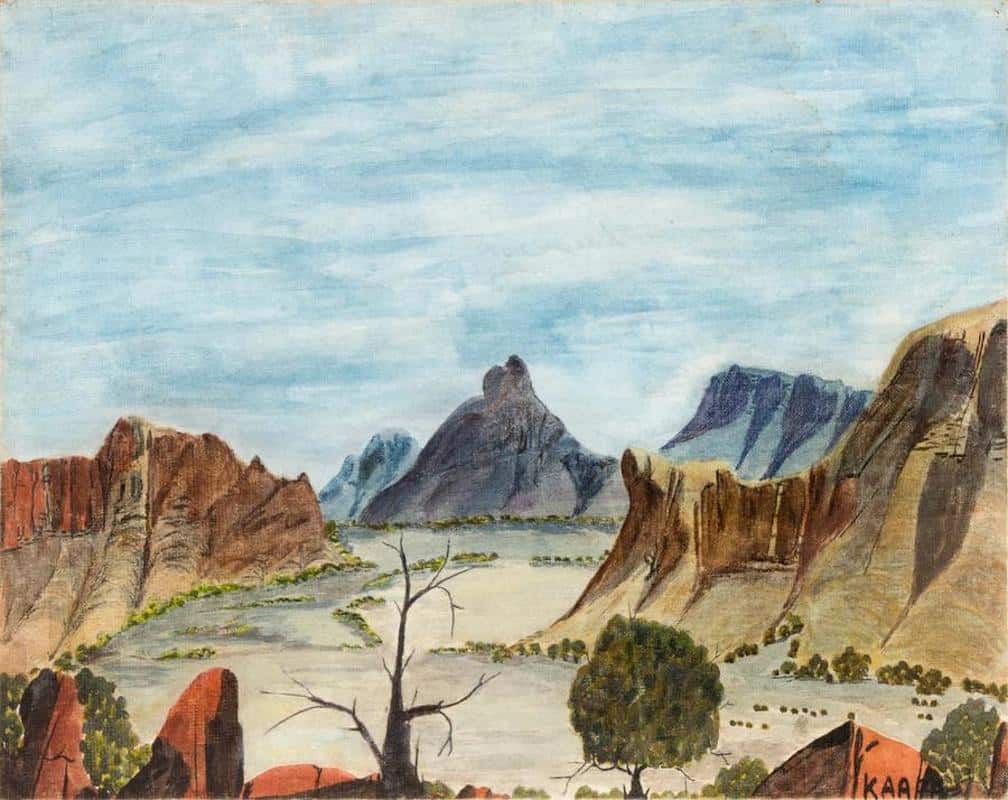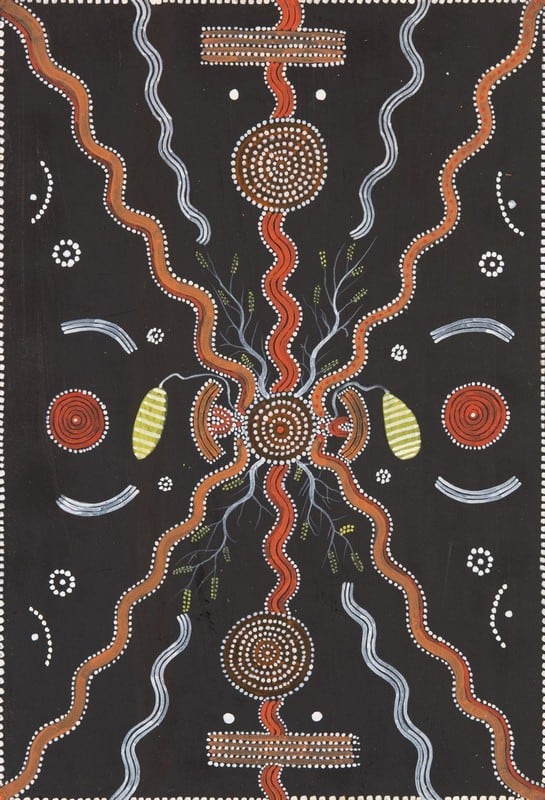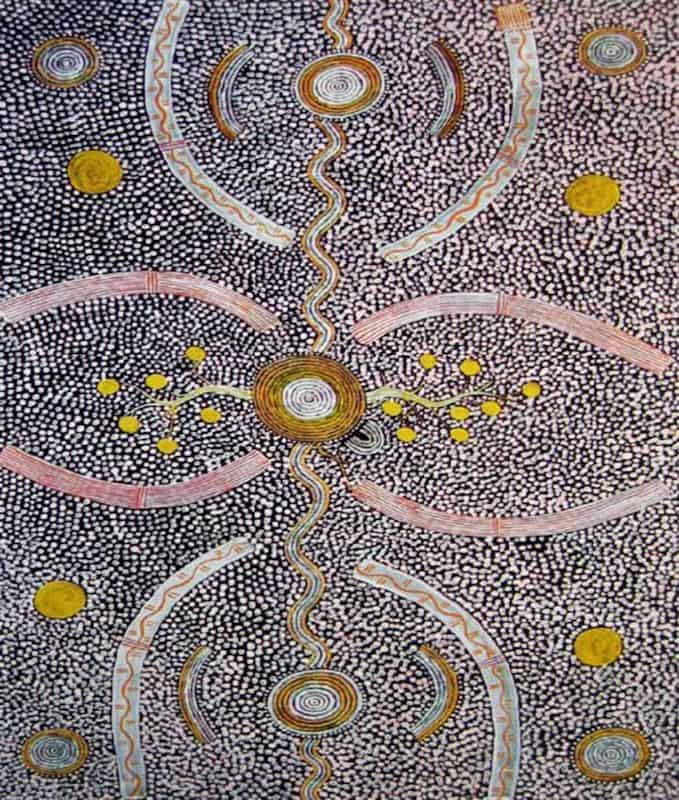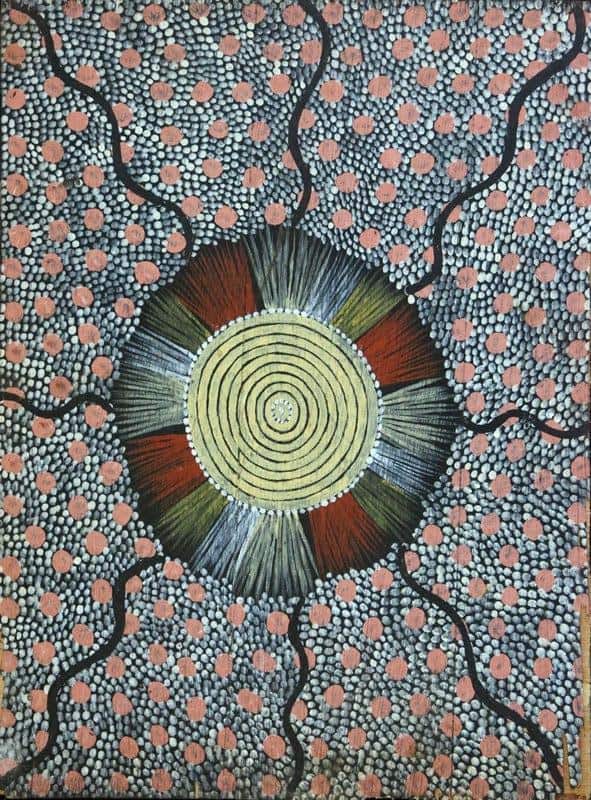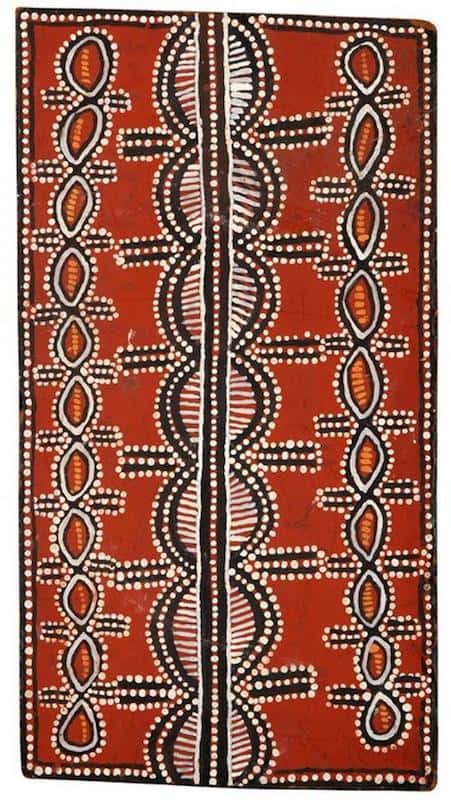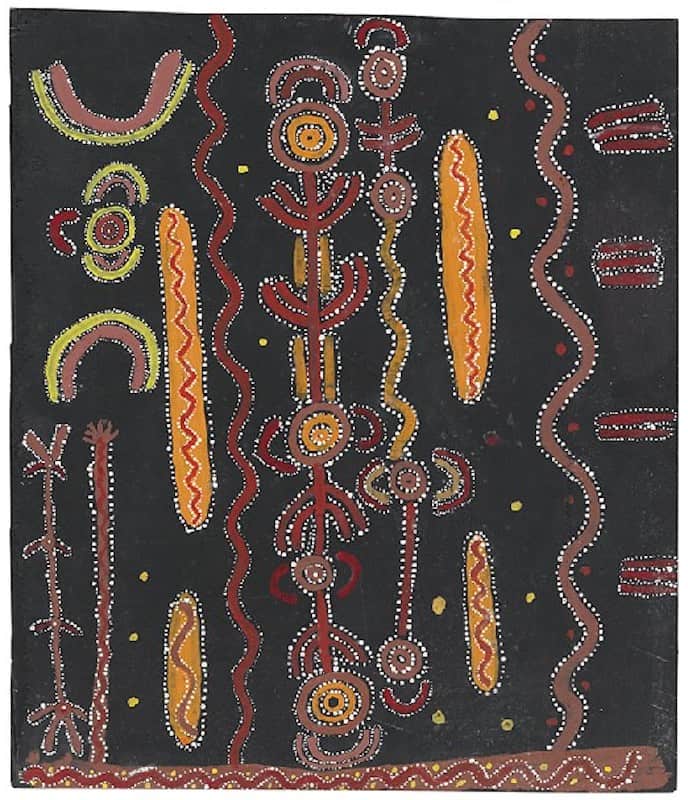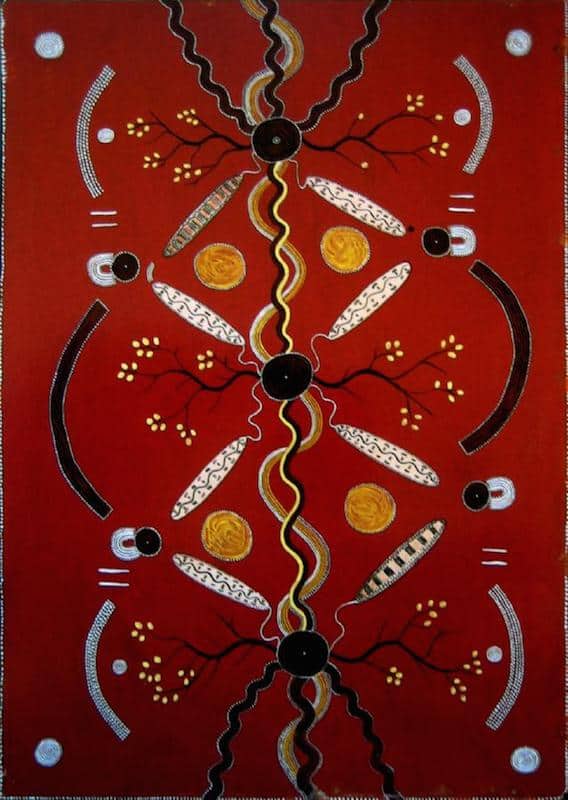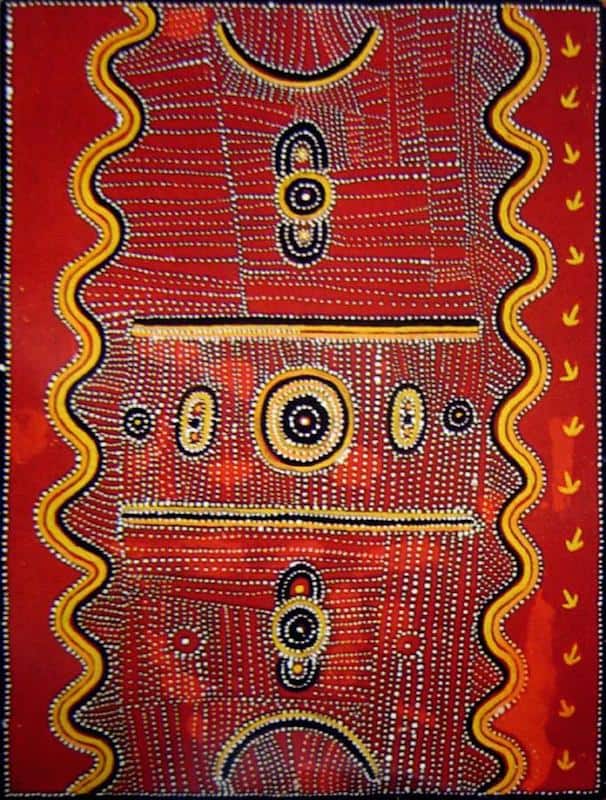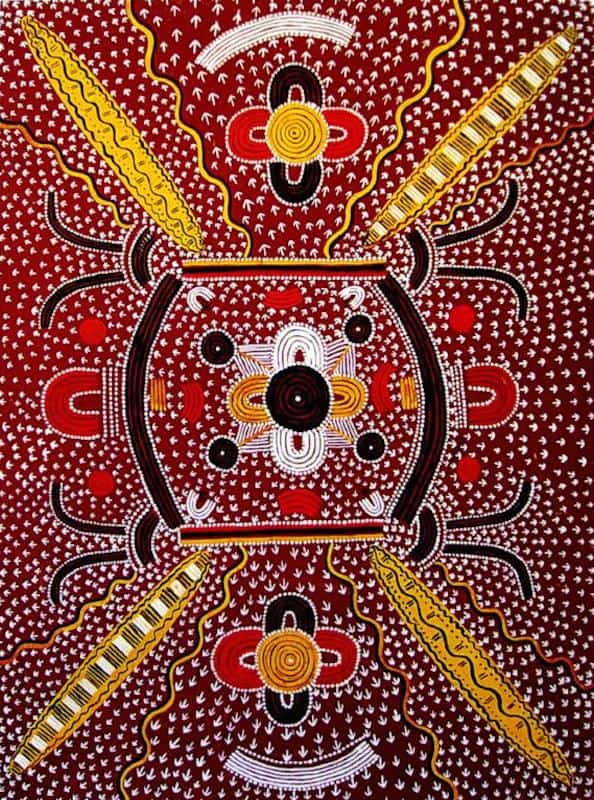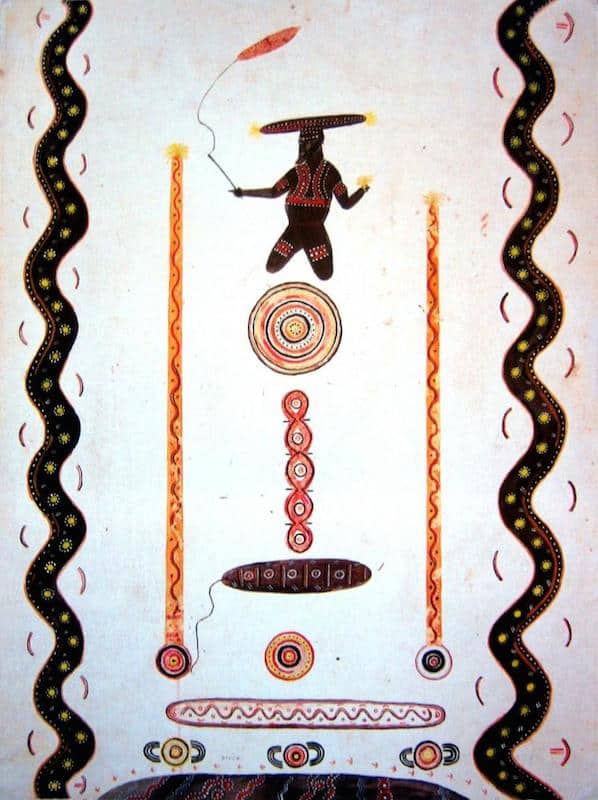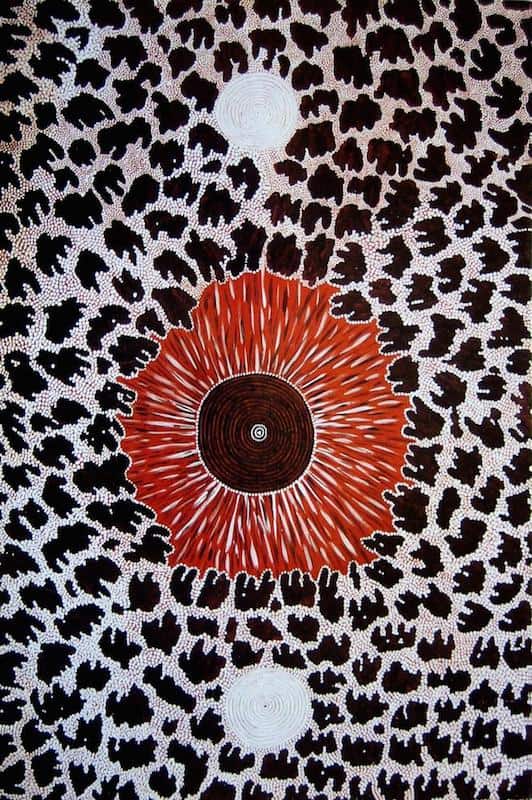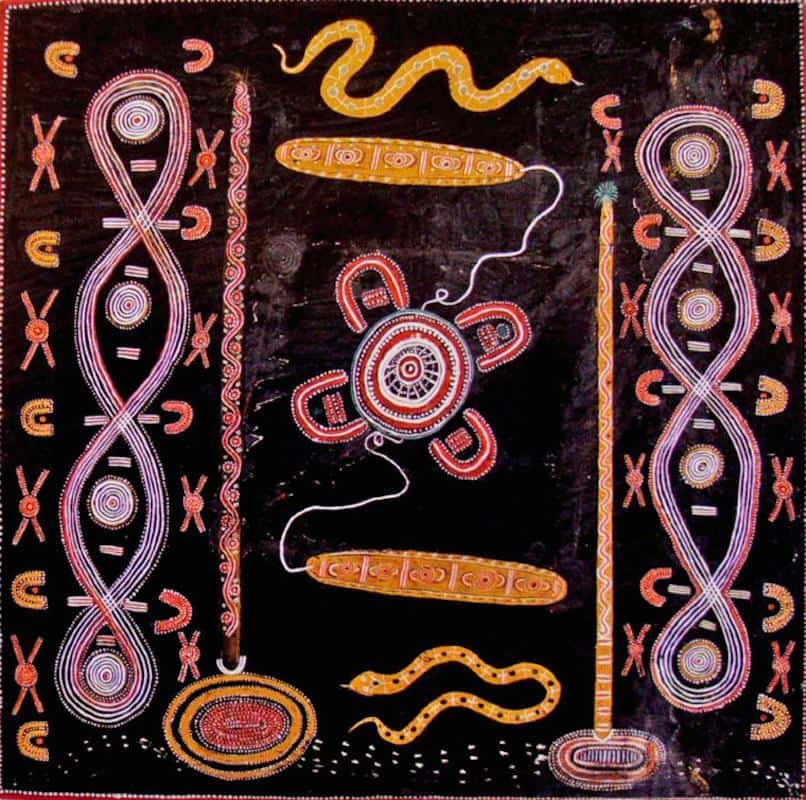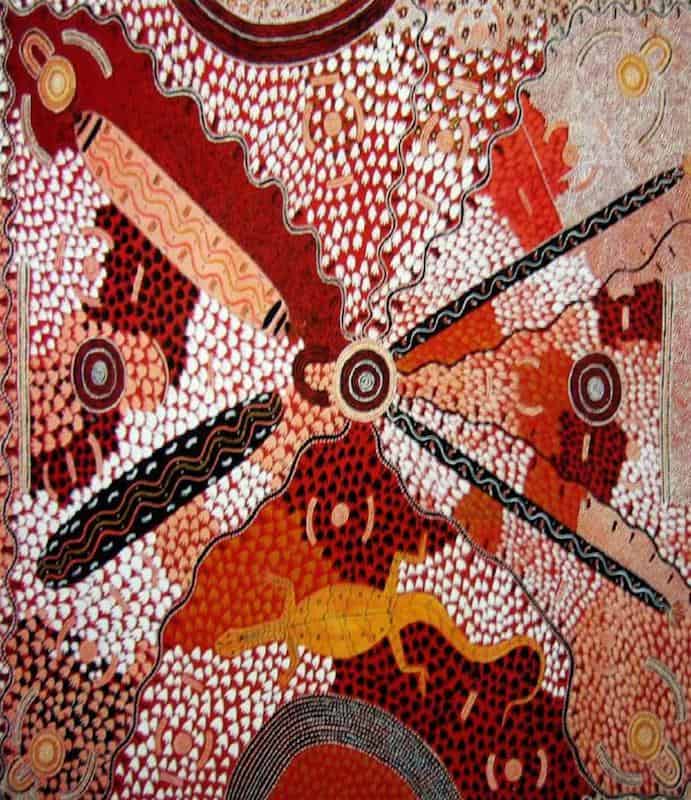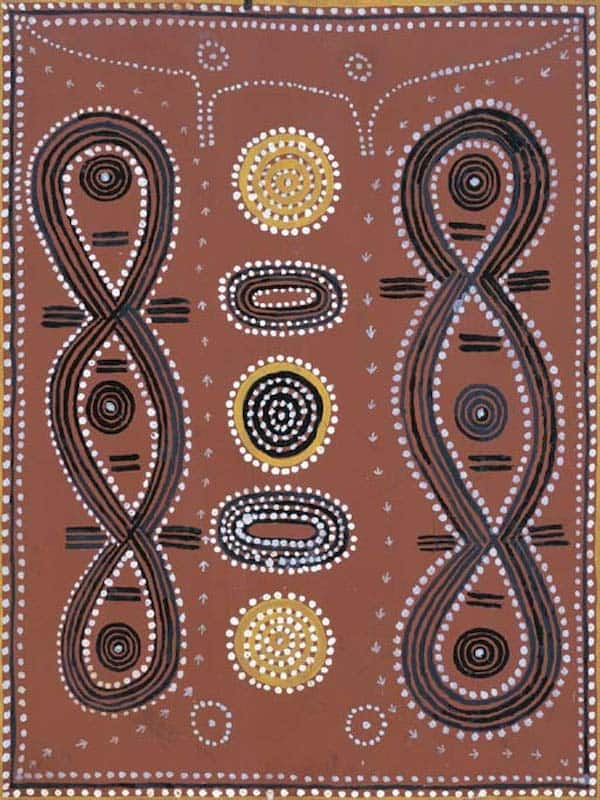Kaapa Mbitjana Tjampitjinpa
Kaapa Mbitjana Tjampitjinpa was one of the major artists to paint a famous mural on Papunya school walls. It is this mural that really sparked the Western desert Aboriginal art movement.
He was a talented artist and in the early part of his career, he painted on board. Many of his early paintings are less than 60 cm x 60 cm. His early works are ritual and often contain secret imagery meant only for the eyes of initiated men.
His later works are on Canvass but although they maintain a high standard, loose some of the magic of his earlier works.
The aim of this article is to assist readers in identifying if their Aboriginal painting is by Kaapa Mbitjana Tjampitjinpa. It compares examples of his work. It also gives some background to the life of this fascinating artist.
If you have a Kaapa Mbitjana Tjampitjinpa Aboriginal painting to sell please contact me. If you want to know what your Kaapa Mbitjana Tjampitjinpa painting is worth please feel free to send me a Jpeg. I would love to see it.
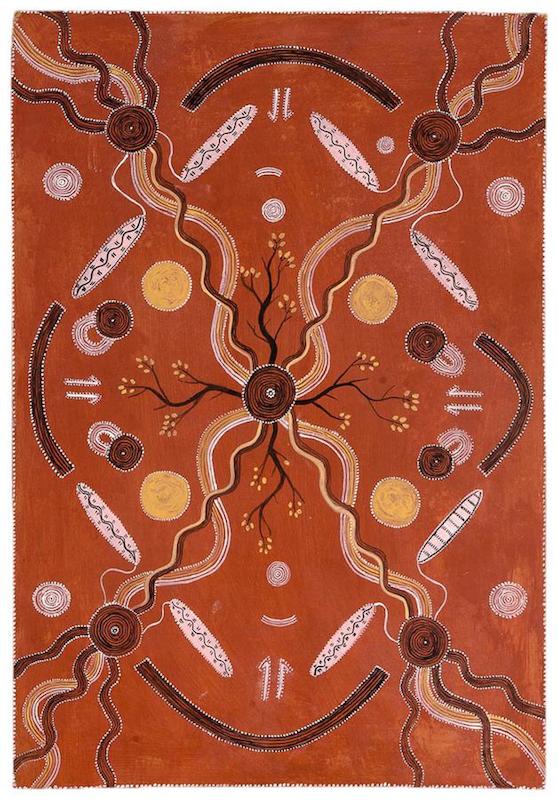
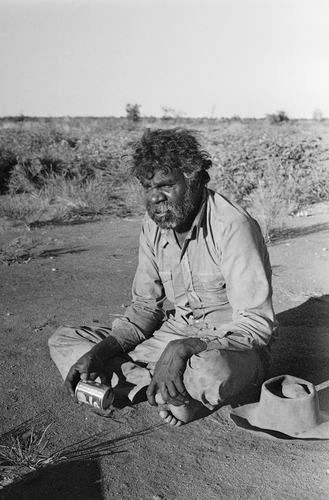
Kaapa Mbitjana Tjampitjinpa Early Life
Kaapa Mbitjana Tjampitjinpa was born west of Napperby at the Emu Dreaming site of Altijir in the 1920’s. Kaapa’s clans country was around Warlurkulangu, the ancestral bushfire site in Warlpiri country.
Kaapa Mbitjana Tjampitjinpa underwent full initiation at Napperby. As a young man, he became a stockman like Tim Leura, Clifford Possum, and Billy Stockman.
He worked at Mount Allan station and spent a period droving cattle between the Tanami desert and Mount Isa in North Queensland. In the 1950’s he settled for a time in Haasts Bluff along with his younger skin brother Dinny Nolan Tjampitjinpa.
In the late 1950’s his entire community was moved to Papunya due in part to the lack of potable water. Papunya was a troubled settlement and Kaapa became renowned to Europeans as a disruptive influence and a grog runner.
To his community, he was a well known traditional artist and respected elder. Like Timmy Payungka he was often called upon to carve and paint important ceremonial objects for tribal purposes. He had also done some Hermannsburg School painting in watercolor.
Early painting
In 1971 Geoff Bardon became a local school teacher at Papunya Primary. He had been unsuccessfully trying to encourage the school children to paint their traditional patterns. He had seen them drawing these patterns in the playground sand but they would not draw them on paper
When he was told only older men were allowed to draw these designs he came up with the idea of a mural.
He soon realized he had to be given permission for a design by the tribal lawgivers. After discussion between the elders like Old Mick and Old Walter, it was decided Kaapa should be the lead artist in making the mural. The mural was painted by Kaapa with assistance from Long Jack and Billy Stockman. The mural was of the honey ant dreaming and caused quite a stir in the small community. The honey ant dreaming was a story common to all the different tribes gathered in Papunya.
After the success of the Mural Bardon decided to start a men’s painting group. Kaapa was at first reluctant to join. As soon as he joined though he committed himself completely to the group. The men’s painting group would meet in an old shed and it was Kaapa who held the keys.
He would be the first to arrive to check on supplies and setting himself up at his regular spot facing the door. He was the only one of the artists to use the table and chair. Kaapa knew he was an artist and the men’s painting group gave him direction. He often sought out the best materials, and asserted his position. Unlike the other artists, Kaapa signed his works from the very start.
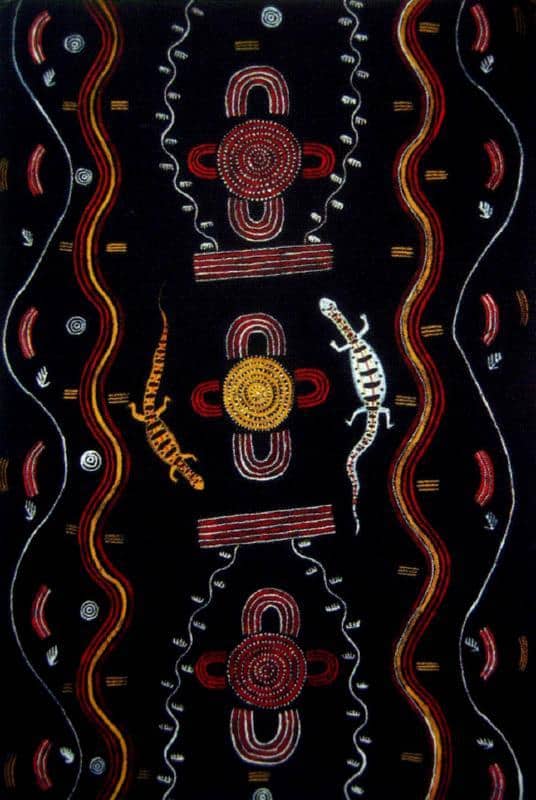
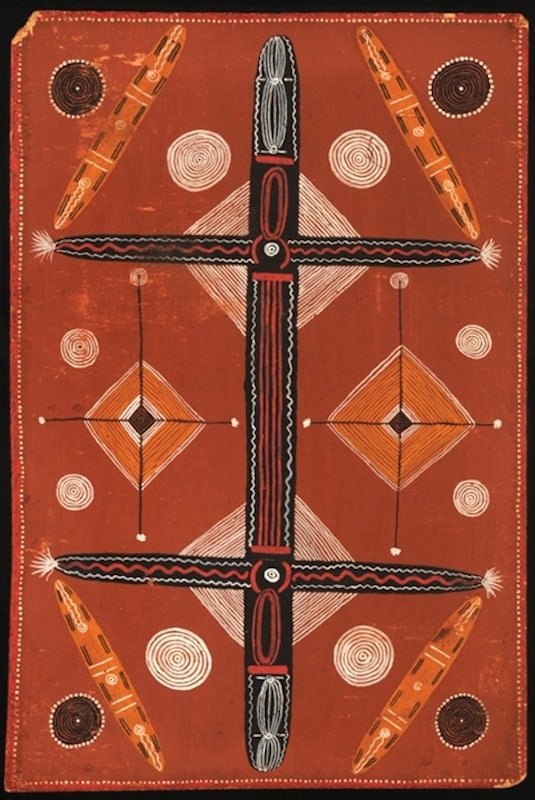
Early Style
Kaapa’s early paintings show designs and motifs painted on a plain black or orange ochre background. Some paintings include realistic figures finely decorated with body paint. Early works often depict ceremonial objects such as shields, spears, and ceremonial boards.
Kaapa’s early art has a graphic clarity and symmetry of design. His ability to paint intimate details with the brush and to build an ordered sense of story appealed to European sensibilities.
Kaapa’s natural talent and skilled technical ability were recognized in 1971. He surprised the Northern Territory art world by becoming the first Aboriginal to win the Alice Springs Caltex Golden Jubilee Art Award.
His Early works are full of traditional aboriginal art meaning and are sort after and collectible.
Kaapa Mbitjana Tjampitjinpa Peak Period
In 1972 and 1973 Kaapa’s produced some of his greatest art. In particular, he produced several paintings of the Budgerigar dreaming. These negotiated a very close line between the secret and the secular. A characteristic dynamic of balance and counterbalance magnifies a powerful sense of presence in these paintings
His detailed brushwork laid down a precise visual vocabulary full of vibrancy and purpose. These barks are a tangible link between aboriginal art and the songlines of his country. These works are in my opinion Kaapa at his best. He has not yet been restricted by the opinions of others and his works are a direct reflection of his ancestral stories and beliefs
1972 was also a prolific year for him. A spate of sales followed his winning the Alice Springs Caltex Golden Jubilee Art Award. The jubilant painting group decided to start their own artists business. They elected Kaapa Mbitjana Tjampitjinpa as founding chairman of Papunya Tula Artists.
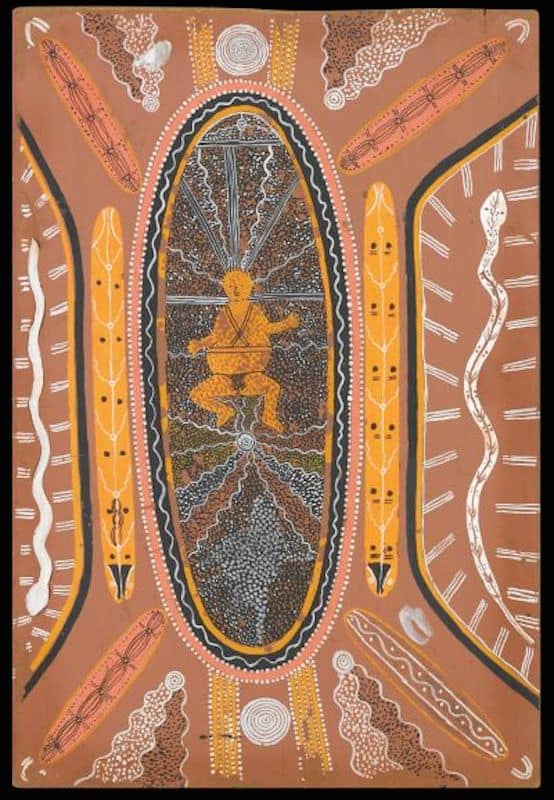
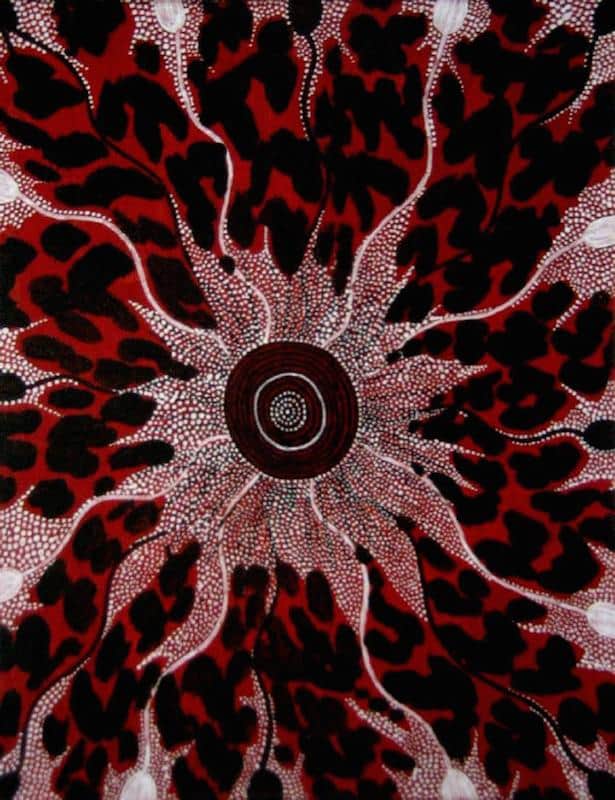
Kaapa Mbitjana Tjampitjinpa Later paintings
In 1974 Papunya artworks for sale in Alice springs cause upset with other aboriginal groups. The paintings were seen as revealing too many secrets and sacred imagery.
To keep the peace Papunya artists started over dotting areas of an artwork that might cause offense. They also decided to paint increasingly less important stories.
The dots used to conceal sacred references soon became design elements. This dot style of painting caused some artists like John Tjakmarra and Clifford Possum to flourish.
The though dots didn’t suit Kaapas style and much of the power and authority inherent in Kaapa’s subsequent works was dissipated under a veil of dots. Kaapa was at odds with the majority of the painting group. He wanted to paint what was important and sacred as he always had.
These subsequent works were popular at the time as Kaapa’s renown grew, but they were far less powerful and he felt artistically stifled.
These later 1980’s works often have floral backgrounds and decorative content. These paintings have lost the soul of his early works and are not as popular with collectors.

Kaapa died in Alice Springs in 1989. His art though endures and are held in major collections throughout Australia and overseas. Like so many great artists his influence and art works persist long after his death.
Kaapa Mbitjana Tjampitjinpa has variations on his skin name so it can be spelled Kaapa Mbitjana Jampijinpa, Kaapa Mbitjana Djambidjimpa or Kaapa Mbitjana Tjambitjimba.
Kaapa is also sometimes spelled Karpa. His tribal name Mbitjana can be spelled Mbitjani, Mbijana,or Mbijani.
Kaapa Mbitjana Tjampitjinpa references
Papunya: A place made after the Story
Papunya Tula: Genesis and Genius
Kaapa Mbitjana Tjampitjinpa Value
My Database contains 86 artworks by Kaapa that vary in value from $700 AUD – $276,000 AUD.
Determining the value of an artwork is quite complex and value depends on much more than the visual image. The provenance, date painted, size, condition and importance of the work within the canon of that artists works are also crucial factors.
If you have a Kaapa Mbitjana Tjampitjinpa artwork and wish to get a valuation please send me an image. Please include the size and any labels or extra information available.
Kaapa Mbitjana Tjampitjinpa Artworks examined
Budgerigar Dreaming
By the spring of 1971, Kaapa often working in association with Leura, pioneered an analytical planar view. They strived to achieve balanced arrangements of ceremonial objects and icons.
Kaapa’s meticulous paintings of the Budgerigar dreaming have an exacting geometry. The divine geometry of Kaapa’s Budgerigar Dreaming is based around a understated but precise centerline.
In the centre is a set of near perfect concentric circles with two u shapes facing the circle. This is a traditional motif for two ancestors next to a ceremonial ground design. Surrounding this motif are a series of geometrically placed ceremonial boards called churinga.
Churinga
These Sacred objects are not shown in graphic detail but are in enough detail for specific churinga to be identifiable. The tiny white arrows, shown ‘flying’ toward the ceremonial ground are the ‘tracks’ of Budgerigars Atetherr. They evoke vast flocks of Budgerigars that congregate at water places across arid Australia.
The tiny white arrows also have a second meaning. They also represent the eagerness of post-initiate men who congregate on the ceremonial ground. The initiates thirst for the knowledge of the elders like budgerigars thirst for water.
Other bold design elements evoke ceremonial ground paintings used during initiation ceremonies.
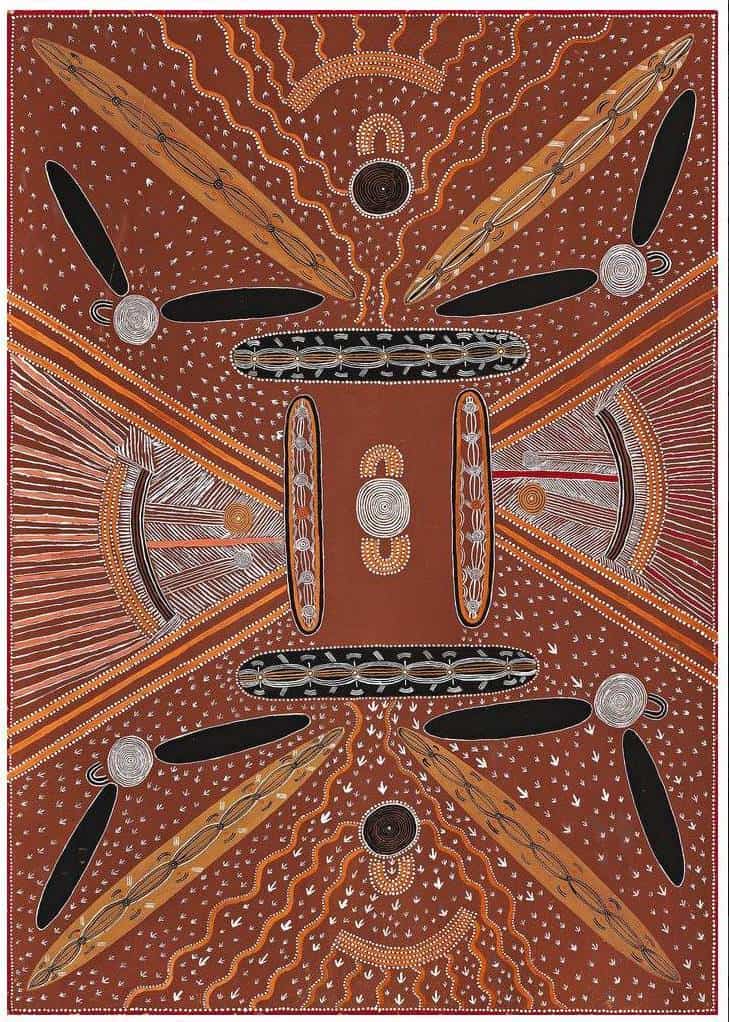
Ceremony
The figure at the top centre of the image is wearing ceremonial body paint and a Corroboree hat. This figure holding a sacred bullroarer. The bullroarer is summoning men for ceremony and warning the women to stay away. Windbreaks frame either side of the art work. Below the figure is a sand painting design and churinga. These objects are in turn framed by long sacred poles also inserted into the centre of sand paintings.
The painting is an aerial perspective of a Ceremonial ground.
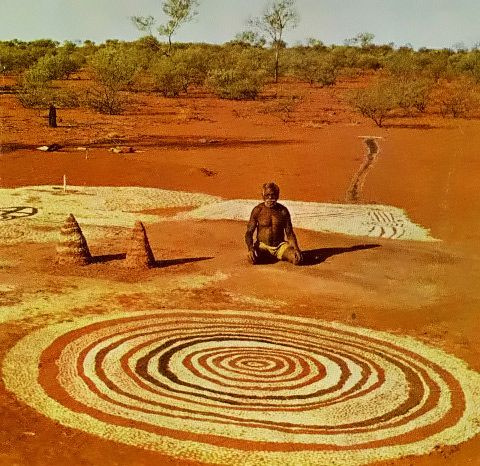
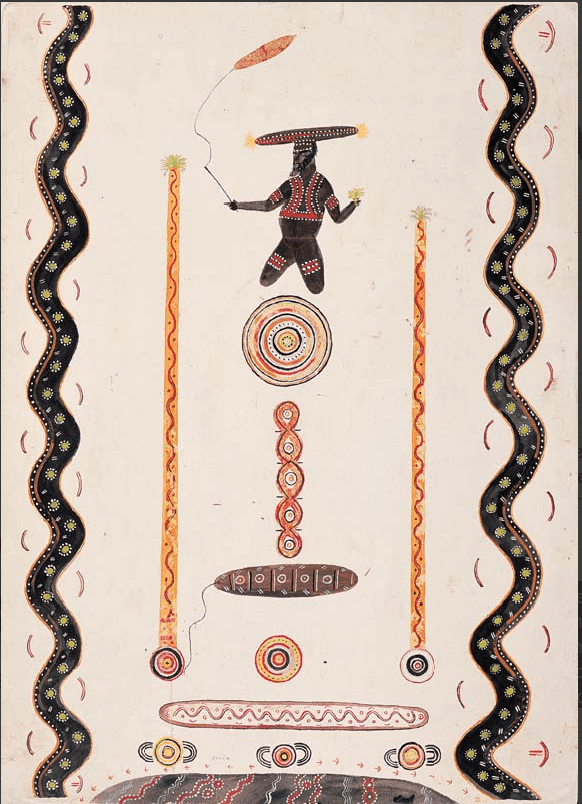
Early Papunya Artworks and Articles
All images in this article are for educational purposes only.
This site may contain copyrighted material the use of which was not specified by the copyright owner.
Kaapa Mbitjana Tjampitjinpa Images
The following images are not the complete known work by this artist but give a good idea of his style and range.

